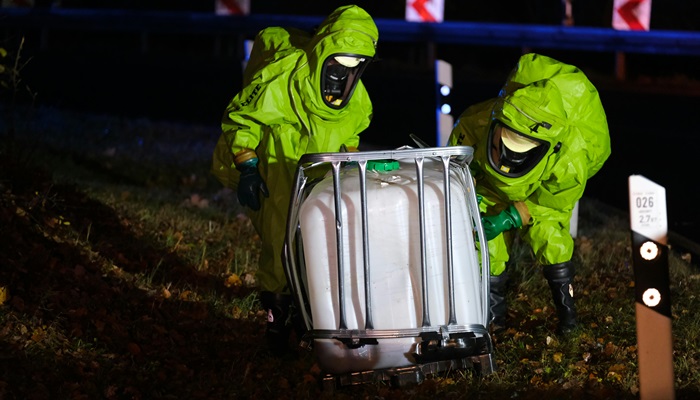PFAS, or per- and polyfluoroalkyl substances, have become a hot topic in environmental and financial circles. These chemicals, found in everything from food packaging to waterproof clothing, are impossible to neutralize. Their widespread use has caused significant environmental contamination, especially in water supplies.
The financial burden of cleaning up PFAS pollution is massive, affecting governments, industries, and private citizens. Hence, it is now at the center of a complex cleanup effort costing billions. Understanding the financial implications of PFAS cleanup efforts is crucial as the costs continue to rise.
The Scale of Contamination
PFAS contamination is more widespread than you might think. These “forever chemicals” have been detected in drinking water systems across the U.S., impacting millions of Americans. Moreover, they’re also found in soil and air miles away from human civilizations.
Over 57,410 locations have been identified where PFAS may be present, highlighting the enormous scale of the problem. It has also proposed strict new standards for PFAS in drinking water, but cleaning up this contamination won’t be easy or cheap.
Who’s Paying for the PFAS Cleanup?
One of the greatest challenges with PFAS cleanup is figuring out who will foot the bill. The costs of removing PFAS from contaminated water and soil are immense. According to recent reports, public water systems across the U.S. face significant financial hurdles.
The Virginia Mercury estimates it will take decades and billions of dollars to clean PFAS from public water supplies. This is a daunting prospect for municipalities, as many are already wrapped in tight budgets. Additionally, private companies are often involved in the PFAS cleanup process. These firms, firsthand responsible for the contamination, are now pressured to handle their part of the cleanup costs.
But the financial strain doesn’t end. Taxpayers may also bear some burden, depending on local policies. It could either be through higher water bills or increased taxes.
The Legal Fallout and Financial Consequences for Companies
The legal landscape surrounding PFAS contamination is also complex. Lawsuits are piling up as communities and individuals seek compensation for PFAS damages. For example, the AFFF firefighting foam lawsuit has gained significant attention as companies responsible for manufacturing and selling PFAS-based foam face legal challenges.
These lawsuits could lead to billions in settlements, pushing companies to commit large sums of money to cover potential legal costs and damages. TorHoerman Law states that 320 new cases were added between September 1st and October 1st, bringing the total pending count to 9,896. As these legal cases pile up, they create financial stress for the involved companies.
With more lawsuits likely to emerge, businesses using PFAS in their products are scrambling to protect their assets and manage the associated financial risks.
Are Superfund Sites and Cleanup Delays a Financial Black Hole?
Superfund sites are hazardous waste locations in the US, requiring years of cleanup efforts. PFAS contamination is now linked to several sites, creating additional financial burdens. The U.S. The Chamber of Commerce estimates that private cleanup costs for PFAS at the present non-federal countrywide critical sites could exceed $17 billion.
But that’s just the tip of the iceberg. Private sector cleanup costs at Superfund sites are estimated to reach $800 million in annualized costs. This translates to $22 billion in present value costs, far more than the regulatory impact analysis (RIA) suggested $100 million. This has resulted in a complex web of financial obligations that corporations must navigate.
The delays in cleaning up these sites don’t just affect companies; they also lead to increased costs for local governments and taxpayers. The longer it takes to clean a Superfund site, the more expensive it becomes. As a result, these delays are a significant financial drain on all parties involved.
The Pentagon’s Billion-Dollar Budget Strain
The military’s use of firefighting foam has also led to widespread PFAS contamination on bases nationwide. This has created another financial dilemma, as the Department of Defense now faces billions of dollars in cleanup costs. The Guardian believes the Pentagon’s budget for PFAS cleanup efforts is substantial. However, it’s still insufficient to meet the long-term financial needs of addressing the military site contamination.
This puts significant pressure on the federal government’s defense budget. The estimated cost for the cleanup of 50 contaminated military sites increased from $27.3 billion in 2016 to $31 billion in 2021. Moreover, the Environmental Working Group (EWG) estimates that the proposed remediation funding only grew by a mere $400 million over the same span. At this trajectory, most sites will remain affected for the next 50 years.
Private Sector Struggles and the Economic Toll on Industries
Industries that have relied on PFAS chemicals in their production processes are now facing severe financial consequences. From the manufacturing sector to wastewater treatment plants, the economic toll of dealing with PFAS contamination is enormous.
A report from Remediation Technology in Minnesota highlights that the costs associated with PFAS cleanup from wastewater alone are exorbitant, further stressing local economies. The report reveals that neutralizing PFAS from water leaving Minnesota’s wastewater purification sites could require up to $28 billion across 20 years.
Moreover, filtering and eliminating PFAS from municipal wastewater costs anywhere from $2.7 million to $18 million per pound, depending on facility capacity. Furthermore, small wastewater processing plants can require per-pound costs exceeding six times those of large plants due to the scale of economies.
Moreover, for industries, the problem isn’t just about cleanup costs; it’s also about reputational damage, regulatory fines, and potential bankruptcy. Companies involved in PFAS contamination might face strict regulations moving forward, making it harder and costlier to continue operations as usual.
Why Investors Should Care About PFAS-Related Financial Risks?
If you’re an investor, the financial risks associated with PFAS contamination should be on your radar. Companies entangled in PFAS lawsuits and cleanup efforts are often forced to reserve massive amounts of capital. It helps them cover legal fees, settlements, and environmental cleanup costs.
This can negatively impact stock prices and long-term profitability. Real estate is another sector feeling the pinch. Properties near contaminated sites may experience a decline in value, while remediation costs for affected land can be substantial. This creates a complex scenario for property owners, developers, and local economies.
The broader financial implications of PFAS are staggering. According to The Guardian, PFAS contamination costs the global economy over $17 trillion annually. Investors should be cautious about companies tied to PFAS-related liabilities, as these costs can significantly influence their bottom line. ChemSec, a Swedish NGO, reveals that these chemicals provide an astonishingly poor ROI for their manufacturers at just $4 billion in annual profits.
While this might be a significant number, it feels trivial once you consider that only 12 manufacturers control the bulk of PFAS production. Moreover, the profit-to-societal cost comparison is also absurd. The average market price of PFAS is about $21 per kg. However, once you consider the societal costs, it exceeds $20,450. Staying informed about ongoing PFAS litigation and cleanup efforts is essential to mitigating investment risks.
Commonly Asked Questions
Q1. What industries are most affected by PFAS cleanup costs?
Chemical manufacturers, aerospace, and textile industries face the brunt of PFAS cleanup costs. Water treatment facilities and firefighting equipment producers are also heavily impacted. These industries are now investing in PFAS-free alternatives and cleanup technologies, which could reshape their future business models.
Q2. How can individuals reduce their PFAS exposure?
To reduce PFAS exposure, use a water filter certified to remove PFAS, avoid non-stick cookware, and check labels for PFAS-free products. Be cautious with fast food packaging and stain-resistant treatments. Remember, small changes in your daily habits can make a big difference in reducing exposure.
Q3. Who is responsible for paying PFAS cleanup costs?
Responsibility for PFAS cleanup costs is shared between private companies, government agencies, and, in some cases, taxpayers. While companies using or producing PFAS are held liable, the financial burden also falls on municipalities and individuals through higher taxes or water bills.
As PFAS contamination continues to be uncovered across the U.S., the financial burden of cleaning it up will grow. Governments, companies, and private citizens will all feel the impact of these rising costs.
It’s clear the financial maze behind PFAS cleanup efforts is complex and costly. As regulations tighten and more contaminated sites are discovered, the true cost of our “forever chemicals” problem becomes apparent. The average American will have to navigate the financial fallout for years.



















